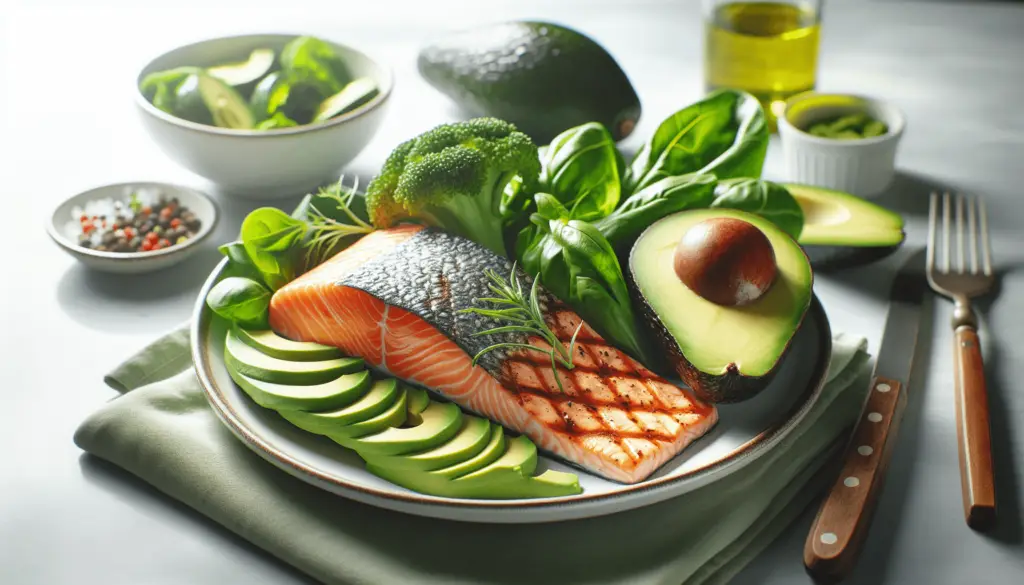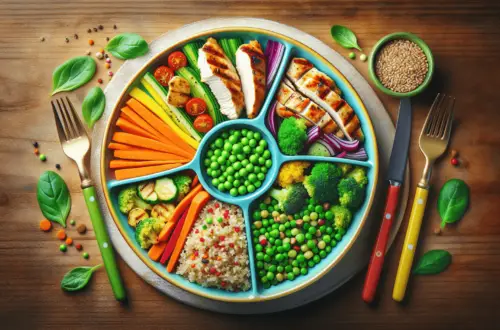The Atkins Diet has been a popular choice for those seeking quick and effective weight loss through a low-carb regimen. In “What Are The Pros And Cons Of The Atkins Diet?”, you’ll discover how this diet promises fast results by cutting down on carbohydrates and emphasizing protein and fats. However, it isn’t without its downsides. The notable benefits include significant initial weight loss and improved blood sugar levels, while the cons highlight potential issues like nutrient deficiencies and possible long-term health risks. This friendly guide will help you weigh the advantages and disadvantages, so you can decide if the Atkins Diet is the right fit for your health journey.
What Are The Pros And Cons Of The Atkins Diet?
Have you ever wondered if the Atkins Diet is right for you? Maybe you’ve heard a friend rave about the quick results, or perhaps you’ve seen it mentioned in the latest health magazine. The Atkins Diet, created by Dr. Robert Atkins, has been around since the 1970s and remains a popular choice for those looking to shed some pounds. But before you jump on the bandwagon, it’s crucial to weigh both the pros and cons. Let’s dive in and explore the ins and outs of this well-known diet.

What is the Atkins Diet?
The Atkins Diet is a low-carbohydrate eating plan that aims to help you lose weight by reducing your carb intake and increasing protein and fat consumption. The idea is that by minimizing carbs, your body will enter a state of ketosis, where it burns fat for energy instead of carbs. This can lead to rapid weight loss, but that’s just the beginning of the story.
The Four Phases of the Atkins Diet
The Atkins Diet is divided into four distinct phases. Each phase has its own set of rules and goals, making it easier to transition into a new way of eating.
| Phase | Name | Description |
|---|---|---|
| Phase 1 | Induction | Kick-start weight loss by limiting carbs to 20-25 grams per day, mostly from vegetables. |
| Phase 2 | Balancing | Gradually add more nuts, low-carb vegetables, and small amounts of fruit. |
| Phase 3 | Pre-Maintenance | Fine-tune your diet by slowly increasing your carb intake until you reach your goal weight. |
| Phase 4 | Maintenance | Maintain your weight by staying within your target carb range and continuing healthy habits. |
The Pros of the Atkins Diet
Now that you understand the basics, let’s delve into the advantages of the Atkins Diet. From quick weight loss to potential health benefits, there are several reasons why people swear by this low-carb regimen.
Quick and Observable Weight Loss
One of the most exciting aspects of the Atkins Diet is the potential for rapid weight loss, especially during the initial phases. When you drastically cut down on carbs, your body starts burning stored fat for energy, resulting in quick weight loss.
Reduced Hunger and Cravings
Unlike some other diets that leave you feeling hungry and unsatisfied, the Atkins Diet focuses on protein and fats, which can help you feel fuller for longer. This can make it easier to stick to your diet and reduce the likelihood of overeating.
Better Blood Sugar Control
For those with type 2 diabetes or insulin resistance, the Atkins Diet may offer some benefits. By reducing carbohydrate intake, you may experience more stable blood sugar levels, which can help manage these conditions better.
Improved Heart Health
Though it’s a subject of ongoing debate, some studies suggest that low-carb diets like Atkins can improve heart health markers. This includes increased HDL (“good” cholesterol) levels and reduced triglycerides.
Flexibility and Variety
The Atkins Diet allows for a wide range of foods, especially as you move through the phases. This can make it easier to stick to compared to more restrictive diets. You can enjoy meats, cheeses, eggs, and even indulge in some berries and nuts as you progress.
The Cons of the Atkins Diet
While there are plenty of upsides, it’s equally important to consider the downsides of the Atkins Diet. No diet is perfect, and understanding the potential pitfalls will help you make an informed choice.
Initial Side Effects
As your body transitions into ketosis, you might experience some initial side effects known as the “Atkins Flu.” Symptoms can include headaches, dizziness, fatigue, and irritability. While these typically subside within a few days, they can be challenging to deal with.
Nutrient Deficiencies
By significantly reducing your carb intake, you may also miss out on essential nutrients usually found in fruits, vegetables, and whole grains. This can lead to deficiencies in vitamins, minerals, and fiber. For example, fiber is crucial for digestive health, and not getting enough can lead to constipation.
Increased Saturated Fat Intake
The Atkins Diet doesn’t necessarily restrict saturated fats, and this can be problematic. Consuming high levels of saturated fats has been linked to increased risk of heart disease. It’s crucial to make sure you’re choosing healthy fats from sources like avocados, nuts, and fish.
Limited Food Options
While the variety increases as you move through the phases, the initial stages of the Atkins Diet can feel quite restrictive. Eliminating most carbs can make social dining situations challenging and may require careful planning and preparation.
May Not Be Sustainable Long-Term
While some people thrive on low-carb diets, others find them difficult to sustain over the long haul. The strict rules and potential for nutrient deficiencies can make it challenging to maintain this way of eating indefinitely.
Comparative Analysis
Understanding how the Atkins Diet stacks up against other popular diets can provide additional context. Below is a comparison table to illustrate some key differences:
| Diet | Key Features | Pros | Cons |
|---|---|---|---|
| Atkins | Low-carb, phased approach | Rapid weight loss, reduced hunger, blood sugar control | Initial side effects, nutrient deficiencies, high saturated fat |
| Keto | Very low-carb, high-fat | Fast weight loss, stable blood sugar, mental clarity | “Keto flu,” restrictive, potential for nutrient deficiencies |
| Mediterranean | Balanced, focus on plant-based foods, healthy fats | Heart health, diverse foods, long-term sustainability | Slower weight loss, may allow for higher calorie intake |
| Paleo | Emphasis on whole foods, eliminates processed foods | Improved digestion, nutrient-dense, reduced inflammation | Restrictive, can be expensive, potential for nutrient gaps |
| Weight Watchers | Points-based system, focuses on portion control | Flexible, social support, sustainable | Costly, may not teach long-term healthy habits |

Real-Life Success and Challenges
Hearing from people who’ve tried the diet can offer valuable insights. Here are a few real-life stories to provide a balanced perspective:
Success Story: John’s Journey
John was tired of feeling sluggish and decided to try the Atkins Diet. Initially drawn by the promise of quick weight loss, he was thrilled when he shed 10 pounds in the first two weeks. Over the next six months, he lost a total of 50 pounds and found it relatively easy to stick to the diet due to reduced hunger and cravings. For John, the Atkins Diet was life-changing, offering not only weight loss but a new approach to eating that he felt he could maintain long-term.
Challenge Story: Sarah’s Struggle
Sarah’s experience, on the other hand, was more challenging. While she lost 8 pounds in the first month, she struggled with the initial side effects and found the diet’s restrictions hard to manage. Social events became a source of stress, and she missed having a broader range of foods. After six months, Sarah decided that the Atkins Diet wasn’t for her. Although she appreciated the weight loss, the difficulty of sustaining the diet long-term outweighed the benefits for her.
Should You Try the Atkins Diet?
Making the decision to start a new diet is deeply personal and should be based on your individual needs, goals, and lifestyle. Here are a few questions to consider before diving into the Atkins Diet:
- Do you have any health conditions? Consulting a healthcare provider is essential, especially if you have diabetes, heart disease, or other medical conditions.
- Are you willing to experience potential initial side effects? Knowing that symptoms like headaches and fatigue are possible can help you prepare mentally.
- Can you commit to meal planning and preparation? The Atkins Diet requires careful planning, particularly in the initial phases.
- How important is long-term sustainability to you? If the idea of maintaining a low-carb lifestyle indefinitely feels daunting, you might want to explore other options.
- What’s your relationship with food? If you’ve had issues with restrictive eating patterns in the past, the Atkins Diet might not be the best fit for you.

Tips for Success on the Atkins Diet
If you decide that the Atkins Diet is the right choice for you, here are some tips to help you succeed:
Plan Your Meals
Preparation is key to sticking with the Atkins Diet. Plan your meals and snacks to ensure you stay within your carb limits and avoid temptations.
Keep Hydrated
Drinking plenty of water is crucial, especially during the induction phase, to help your body adjust and to minimize side effects like headaches and fatigue.
Monitor Your Nutrients
Pay close attention to your intake of vitamins and minerals. Consider incorporating a multivitamin or specific supplements to cover any potential gaps.
Choose Healthy Fats
Focus on getting your fat from healthy sources like avocados, nuts, and olive oil. This can help improve your heart health while still adhering to the diet’s guidelines.
Stay Active
Incorporate regular physical activity to complement your diet. Exercise can boost your metabolism and support your weight loss efforts.
Common Misconceptions
Before wrapping up, let’s address some common misconceptions about the Atkins Diet:
It’s All About Bacon and Butter
While the diet allows for higher fat consumption, it’s not just about eating bacon and butter. Healthy fats and lean proteins should make up a significant portion of your meals.
No Room for Veggies
Though the initial phase is very low in carbs, the later stages reintroduce high-fiber vegetables, nuts, and fruits.
It’s Just Another Fad
With decades of history and scientific studies backing its principles, the Atkins Diet is more than a passing trend. However, like any diet, its effectiveness can vary from person to person.

Final Thoughts
The Atkins Diet offers a unique approach to weight loss and overall health by focusing on reducing carbohydrate intake and increasing protein and fat consumption. With its potential for rapid weight loss, reduced hunger, and better blood sugar control, it can be an effective tool for many. However, it’s equally important to consider the potential downsides, such as initial side effects, nutrient deficiencies, and the sustainability of maintaining a low-carb lifestyle long-term.
By understanding both the pros and cons and considering personal factors like your health conditions, lifestyle, and long-term goals, you can make an informed decision. Whether you choose to try the Atkins Diet or explore other options, the key is finding a balanced, sustainable approach that works for you.
So, what do you think? Is the Atkins Diet worth a try for you? Take the time to weigh the pros and cons, consult with healthcare providers if needed, and choose the path that best aligns with your goals and lifestyle. Remember, the journey to better health is a marathon, not a sprint. Cheers to making informed and mindful decisions!





